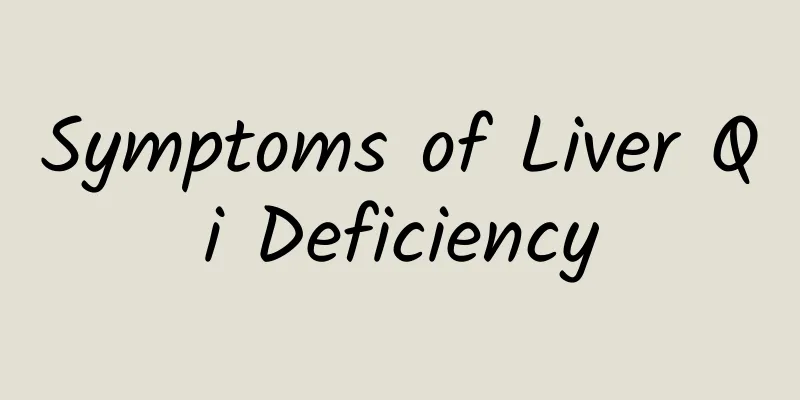Hemorrhagic shock blood loss

|
The importance of blood to the human body is self-evident. The human body needs a normal supply of blood. Daily trauma, peptic ulcer, esophageal varicose vein, gynecological diseases, or difficult labor during childbirth may all lead to blood loss. If a large amount of blood loss occurs and the amount of blood loss reaches a certain limit, the person will go into shock and need timely treatment. So, how much blood loss will cause a person to experience hemorrhagic shock? 1. Concept Shock caused by massive blood loss is called hemorrhagic shock. Whether shock occurs after blood loss depends not only on the amount of blood loss, but also on the rate of blood loss. Shock often occurs when blood is lost rapidly and in large quantities without timely replenishment. 2. Causes It is common in bleeding caused by trauma, bleeding from peptic ulcer, rupture of esophageal varicose veins, bleeding caused by gynecological and obstetric diseases, etc. Symptoms Pale, cool, clammy skin (often with spots), tachycardia (or severe bradycardia), rapid breathing, poor peripheral venous filling, weakened jugular vein pulse, decreased urine output, altered mental status, and decreased blood pressure. 4. Diagnosis In many cases, diagnosing bleeding is not too difficult. Both history and physical signs reflect intravascular volume depletion and a compensatory adrenergic response. If the blood loss process is slightly longer, the amount of blood is larger, and the fluid movement gradually increases, the blood will become concentrated, manifested as increased hemoglobin, increased hematocrit, increased ratio of urea nitrogen to creatinine, and increased serum sodium. 5. Blood loss Assessment scale for the severity of hemorrhagic shock: 1. Grade I (compensated stage): The amount of bleeding is less than 750 ml, which is less than 15% of the blood volume. Systolic blood pressure is normal, and pulse is less than or equal to 90 beats/min. Urine volume decreases to 40-50 ml/h. Central venous pressure is normal, and there is no or mild thirst and restlessness. 2. Grade II (mild): The amount of bleeding is between 80 and 1200 ml, accounting for 20% to 30% of the blood volume. The systolic blood pressure is 10.7~9.33kPa, and the pulse is 100 beats/min. Urine volume decreases to 30-40 ml/h. The central venous pressure drops to about 0.49 kPa, the face becomes pale, the mouth becomes dry, irritability occurs, cold sweats occur, and the limbs become cold. 3. Grade III (moderate): The amount of bleeding is between 1200 and 1700 ml, accounting for 30% to 40% of the blood volume. The systolic blood pressure is between 9.33 and 8.01 kPa, and the pulse rate is 100 to 120 beats per minute. Oliguria: 10-20 ml/h. The central venous pressure dropped significantly to less than 0.49 kPa, with severe dry mouth, apathetic expression, and cyanosis of the extremities. 4. Grade IV (severe): The amount of bleeding is 1700-2100 ml, accounting for 40%-50% of the blood volume. The systolic blood pressure is between 8.0 and 5.33 kPa, and the pulse rate is greater than 120 beats/minute. Anuria, significantly reduced central venous pressure, cyanosis of the lips and extremities, rapid breathing, and extremely indifferent expression. 5. Grade V (extremely severe): The amount of bleeding is greater than 2100 ml, accounting for more than 50% of the blood volume. The systolic blood pressure is less than 5.33 kPa, and the pulse is weak or undetectable. Anuria, central venous pressure is zero or negative, and there is impaired consciousness or coma. 6. Treatment Once a patient shows symptoms of gastrointestinal bleeding such as vomiting blood and black stools, he should seek medical attention immediately to avoid delaying the disease. At this time, it is very important to judge the severity of the disease and understand whether there are signs of shock. If the patient's general condition is relatively stable and the amount of bleeding is not too much, there will be ample time to undergo various comprehensive examinations to understand the location of the bleeding and carry out relevant treatment. If bleeding is heavy or there are early signs of hemorrhagic shock, active rescue measures should be taken. |
<<: Alpha-hemolytic Streptococcus
>>: Avascular necrosis of talus
Recommend
What is the cause of cervical cold
The coldness of the cervical spine is mainly caus...
The special effects of Xiongju Shangqing Pills
In modern society, the pressure of work and life ...
What is an ovarian chocolate cyst? What are the early symptoms?
Ovarian chocolate cysts are a type of endometrios...
What is the treatment for paronychia?
Paronychia usually occurs on the big toe, mainly ...
What causes eczema?
Eczema is the most common skin disease in clinica...
Hepatitis C Antibodies
There are many common problems in life, and they ...
What are the taboos of eating ginseng?
Ginseng generally grows on mountains at an altitu...
What are the Chinese patent medicines for soothing the liver, strengthening the spleen and tonifying the kidney?
Physical health is an important thing in daily li...
Symptoms of gout
The physical feeling that people hate most is pai...
What should you not eat when you have gout symptoms?
Patients with gout must have a very hard time, be...
My skin is itchy and red spots appear when I scratch it. What's going on?
The skin itches and red spots appear when scratch...
Traditional Chinese medicine treats osteomyelitis with good results by treating both internal and external factors
Traditional Chinese medicine treats osteomyelitis...
Why do we have birthmarks? It turns out that the body is lacking this thing!
I believe everyone has heard of and seen birthmar...
Does Tongcao have any side effects in promoting lactation?
Many people have drunk Tongcao soup in their dail...
Why do my palms sweat?
Sweating palms is very common for many friends, b...









